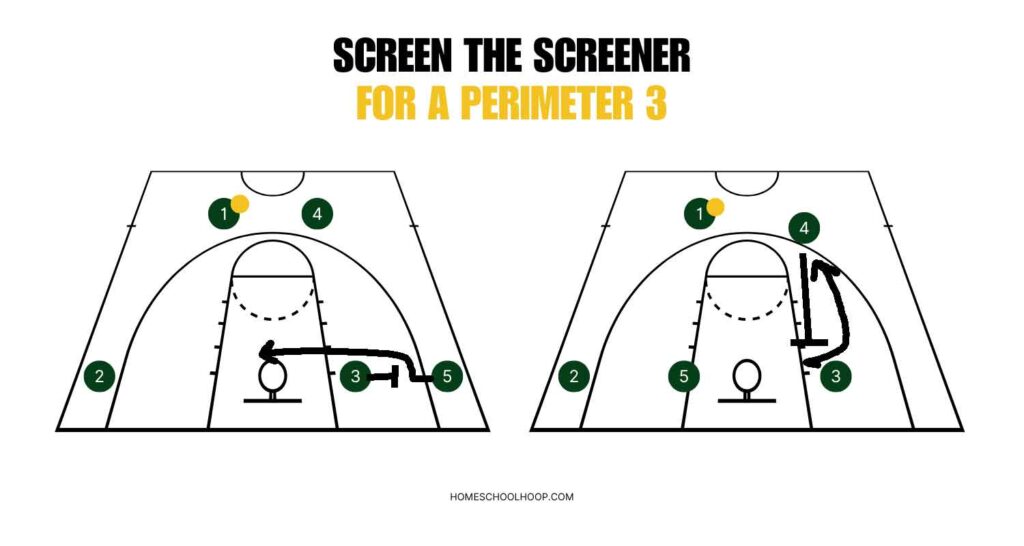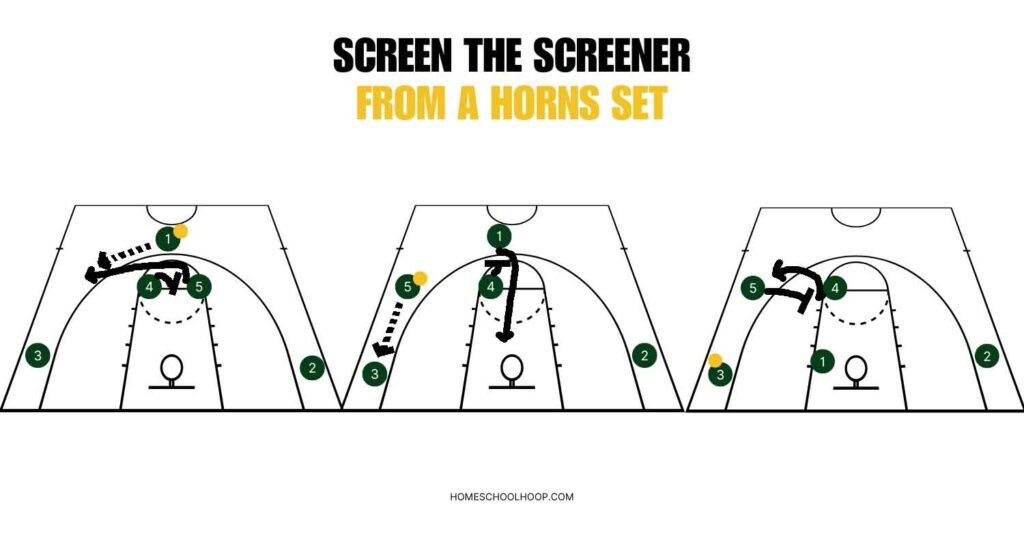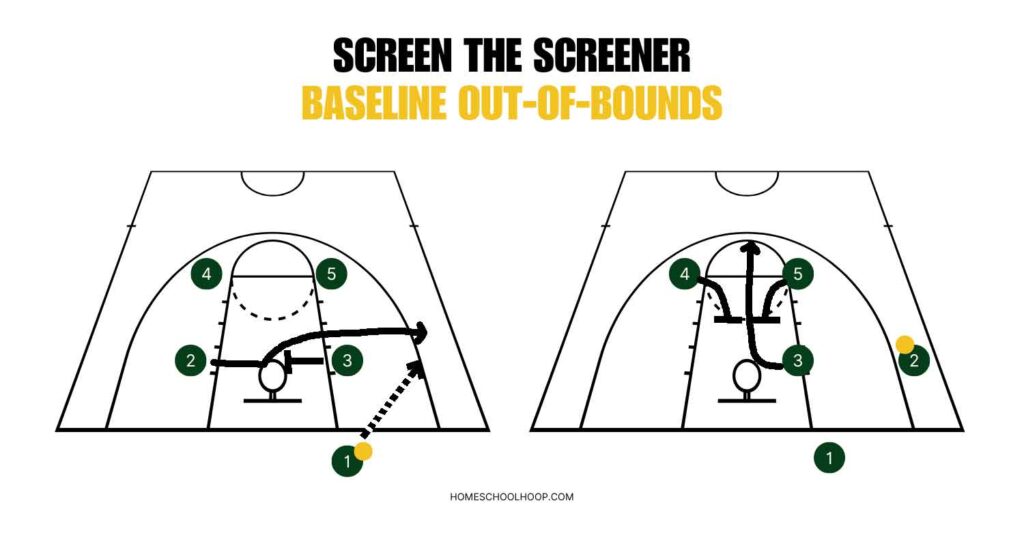Over the past few months, we’ve dived into the types of screens in basketball. But if you watch any game, you’ll quickly notice that offenses don’t run single-screen plays. Most offensive schemes incorporate multiple screens, and that’s where the “screen the screener” strategy comes in.
Key Takeaways:
- “Screen the screener” starts with one player setting a screen and then receiving a screen themselves, putting more stress on the defense.
- The strategy can apply to both off-ball and on-ball screen scenarios.
- When executed well, the tactic leads to high-quality scoring chances.
Let’s look at this idea a bit closer. In this article, we’ll explore the nuts and bolts of the “screen the screener” strategy. From basic principles to detailed play examples, you’ll learn how this approach challenges even the best defenses and leads to quality open looks at the basket.
The Basics of “Screen the Screener”
“Screen the screener” is a screening strategy in basketball where a player sets a screen for a teammate and then immediately receives a screen from another teammate.
This play is designed to create open shot opportunities and clear paths to the basket for the player who sets the first screen in the sequence. The strategy can be incorporated into off-ball and ball screen situations.
Why It Works
This aggressive screening action puts a big demand on the defense. Defenders can often navigate one screen easily, but facing two or more screens in succession is another story.
What often happens is that the defender of the initial screener is focused on managing the first screen and gets caught off guard by the second screen they either don’t see coming or are not in a position to avoid.
Strategic Advantages
The “screen the screener” strategy is effective in basketball offenses because it challenges the defense with multiple consecutive screens. This added complexity increases the chance of defensive errors because it forces them to adapt quickly, often leading to mistakes, miscommunications, and mismatches.
And when these breakdowns happen, other defenders have to decide whether to let the offense get an easy look or leave their player to help. This leaves their player open for a scoring chance.
Also, teams of all levels (even the NBA and WNBA) can use the screening strategy to create scoring opportunities all over the court. Depending on the screening scheme, they can set up paths to get players open layups or three-pointers.
Implementation and Examples
There are many ways to incorporate this type of screening action into an offense. So here, we’ll show how this strategy can unfold in various types of plays, both within half-court offenses and during out-of-bounds situations.
Screen the Screener Offense Examples
To get a shot near the basket, teams can start in a box set and run an elevator screen near the top of the key followed by a back screen for one of the elevator screeners. This opens the path for a layup or dunk.

For an open perimeter shot, a team can run a flex screen along the baseline followed by a down screen. This gives the flex screener an open three-point look.

To start this example of a Horns screen-the-screener play, one post player at the high post sets a screen for the other to catch the pass on the wing. As the ball swings to the corner, the remaining high post sets a back screen for the point guard before receiving a screen from the post player at the wing for an open three-pointer.

Screen the Screener Out of Bounds Plays
This screen the screener BLOB (baseline out of bounds) play starts in a box formation. The ball-side low post cross screens for the opposite low post, who catches the ball out near the wing. The two high post players then immediately set an elevator screen for the initial screener to look for an open perimeter shot at the top of the key.

FAQs
What does screen the screener mean?
“Screen the screener” refers to a basketball sequence where one player sets a screen for a teammate and then immediately receives a screen from another teammate.
LET US KNOW
Today, you learned about the screen-the-screener tactic in basketball.
So we want to know: What’s your favorite play that involves this strategy, and why do you like it?
Share your favorite plays in the comments.


